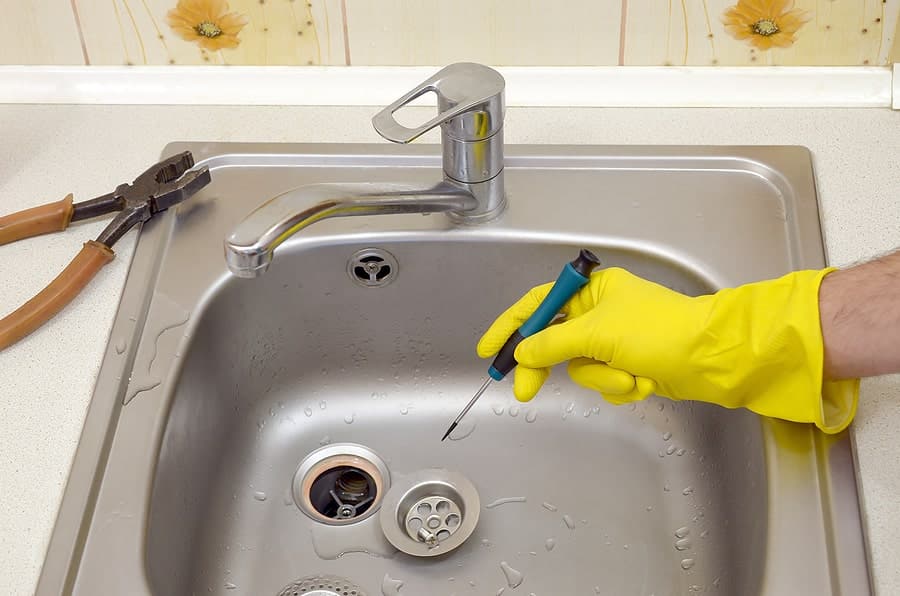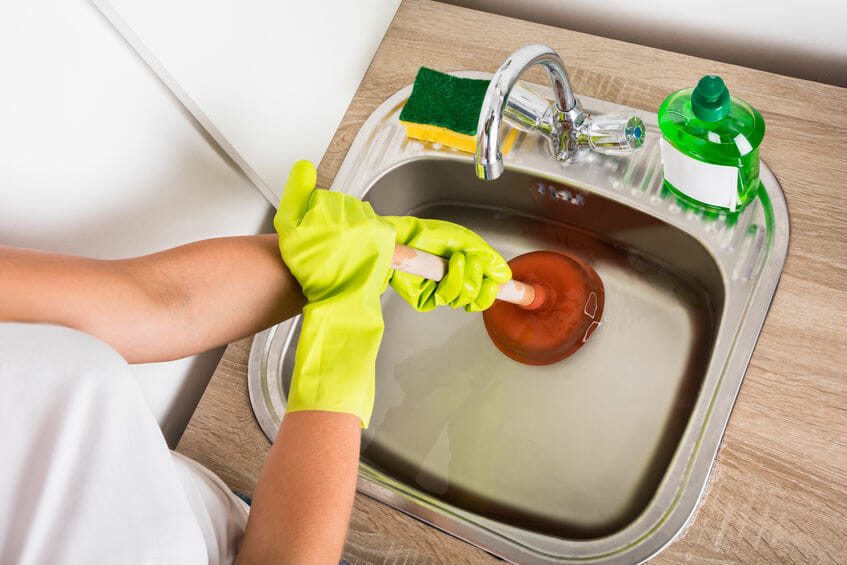Learning the Art of Do-It-Yourself Kitchen Sink Unclogging: 5 Secrets
Learning the Art of Do-It-Yourself Kitchen Sink Unclogging: 5 Secrets
Blog Article
Have you been hunting for resources concerning Fixing Typical Household Plumbing Problems?

In this article, we will be considering 5 basic steps you could require to release your kitchen area sink from blockages as well as conserve you from the discomfort and also humiliation of taking care of a stopped up kitchen sink.
Clogged kitchen sinks are just one of one of the most common drainage concerns home owners face. And what's even more, it's a unpleasant and also very unpleasant view. Envision going to the sink to do your recipes and figuring out that the drain is blocked and water can not flow down conveniently.
A lot of blocked water drainages are caused by food debris, soap, fat, as well as oil fragments. They clog the sink and also make it hard for water to go down the drain promptly. While it is appealing to put a call through to the plumbing technicians, there are a few DIY hacks you could attempt first before making that call.
1. Sodium Bicarbonate and Vinegar
Rather than using any kind of form of chemicals or bleach, this approach is more secure and also not harmful to you or your sink. Sodium bicarbonate and also vinegar are day-to-day residence items used for several other points, and also they can do the method to your kitchen area sink.
Firstly, remove any kind of water that is left in the sink with a mug.
Then put a good amount of cooking soft drink down the drain.
Pour in one cup of vinegar.
Seal the drainage opening and also enable it to choose some mins.
Pour hot water down the tubes to disappear other persistent deposit as well as bits.
Following this simple technique might work, and also you can have your kitchen area sink back. Repeat the process as long as you regard needed to rid the sink of this debris entirely.
2. Attempt a Plunger
If the issue is not from the garbage disposal, you can attempt utilizing a bettor. Bettors are standard home tools for this occasion, and they can come in convenient if you use them effectively. A flat-bottomed plunger is most ideal for this, yet you can use what you have is a toilet plunger.
Follow the list below simple steps to use the plunger successfully:
Secure the drainpipe with a cloth and also load the sink with some hot water
Place the plunger in position over the drain as well as start plunging
Check to see if the water runs easily after a couple of dives
Repeat the procedure till the drainage is free
3. Possibly it's the Garbage Disposal
In many cases, the clog might be due to a clog in the disposal. Use pliers rather.
If this does not work, you can explore the adhering to option to unclog your cooking area sink.
4. Utilize a Hanger
This method is efficient as well as ingenious, especially if you understand as well as maybe see what's creating the obstruction. Sometimes, the obstruction could be brought on by hair, jewelry, or big chunks of food bits. Making use of a wire fabric wall mount or a plumber's serpent if you have one can do the method. All you need do is align the hanger to decrease the drainpipe while you meticulously choose the fragments triggering the obstruction.
Run warm water down the tubes after this to see just how successful you were.
5. Use Boiling Water
When faced with a clogged up sink, the first thing you should try is to put boiling thin down the drain. That is about one of the most simple solution to stopped up sinks and also drainages. Boiling water aids counteract the bits and also particles causing the clog, especially if it's soap, oil, or oil bits, and also in a lot of cases, it can flush it all down, and your sink will certainly be back to normal.
Due to the fact that hot water might thaw the lines and cause more damage, do not try this technique if you have plastic pipes (PVC). If you use plastic pipes, you may wish to stick to utilizing a plunger to obtain debris out.
Using this approach, switch on the faucet to see exactly how water streams after pouring warm water down the drain. Try the process once again if the clog continues. However, the clog could be a lot more relentless in many cases and call for more than just boiling water.
Final Words
Attempting these couple of techniques could save you the expenditures of having a plumber check it. In several situations, a plumber is what we need. In cases where you discover it difficult to unclog the sink even after trying all these techniques, it may be time to leave it to the experts.
Contact expert plumbing business to fix your drainage problems and also other different house plumbing needs.
Clogged kitchen area sinks are one of the most common water drainage concerns homeowners encounter. Picture going to the sink to do your recipes and discovering out that the drainpipe is obstructed and water can not move down quickly.
They obstruct the sink and also make it hard for water to go down the drainpipe quickly. When faced with a blocked sink, the initial point you need to try is to put boiling water down the drain. Boiling water helps reduce the effects of the particles and particles creating the obstruction, particularly if it's oil, oil, or soap particles, and also in many situations, it can purge it all down, and your sink will be back to typical.
What Causes a Clogged Kitchen Sink?
Food and Debris Stuck in the Drain
Since your kitchen is where you and your family are most likely to consume and throw away food, a lot of that waste gets trapped in the kitchen sink. Whether from rinsing dishes, preparing food over the sink or putting too much waste in your garburator, your kitchen sink will get clogged over time. There are actually certain foods that should not be put down the kitchen sink. These include:
Coffee grinds
Eggshells
Bones
Celery
Fruit pits
Pasta
Potato peelsGrease Build Up
Because grease becomes solid at room temperature and is not soluble in water, over time grease will accumulate on the inside of your drain and cause a blockage. Additionally, grease is very sticky and other kinds of food and debris could get trapped in it once again causing you to have a clogged kitchen sink.
It s much safer to dispose of grease by throwing it in the garbage. The best way to do this is by putting extra cooking grease and oil in a mason jar. Once the jar is full and the grease has solidified, it can be thrown out with the rest of your trash.
Toys and Other Objects
If you have little kids, you may not be surprised to know that toys can become stuck in your kitchen drain or garbage disposal. Perhaps your little one was playing around, or maybe you used the kitchen sink as a baby bath and some toys got stuck. Toys and other objects are not meant to go down a kitchen sink. These objects will block your pipes and get stuck in your P-trap.
Remove All Standing Water
Before you tackle the clogged drain itself, it s important to remove all the standing water in your sink. Standing water is the water stuck in your sink because the sink was still used after a clog had occurred. To bail out the excess water, follow these steps:
1. Put on rubber gloves to protect your hands from chemicals or sharp objects such as kitchen knives in the sink.
2. Use a jug, cup or bowl to remove water from the drain. Flush this water down the toilet or use a different sink in your home to dispose of it. If there are food items in the dirty water, use a basket catch to prevent the food from clogging up another sink or your toilet.
3. Remove any visible food debris from the drain. If the drain is attached to a garburator, do not put your hand or fingers near the drain.

As a fervent reader on DIY Plumbing Fixes, I assumed sharing that excerpt was worthwhile. If you please take the time to share this write-up if you enjoyed reading it. We truly appreciate reading our article about DIY Plumbing Fixes.
Protect your home, dial! Report this page